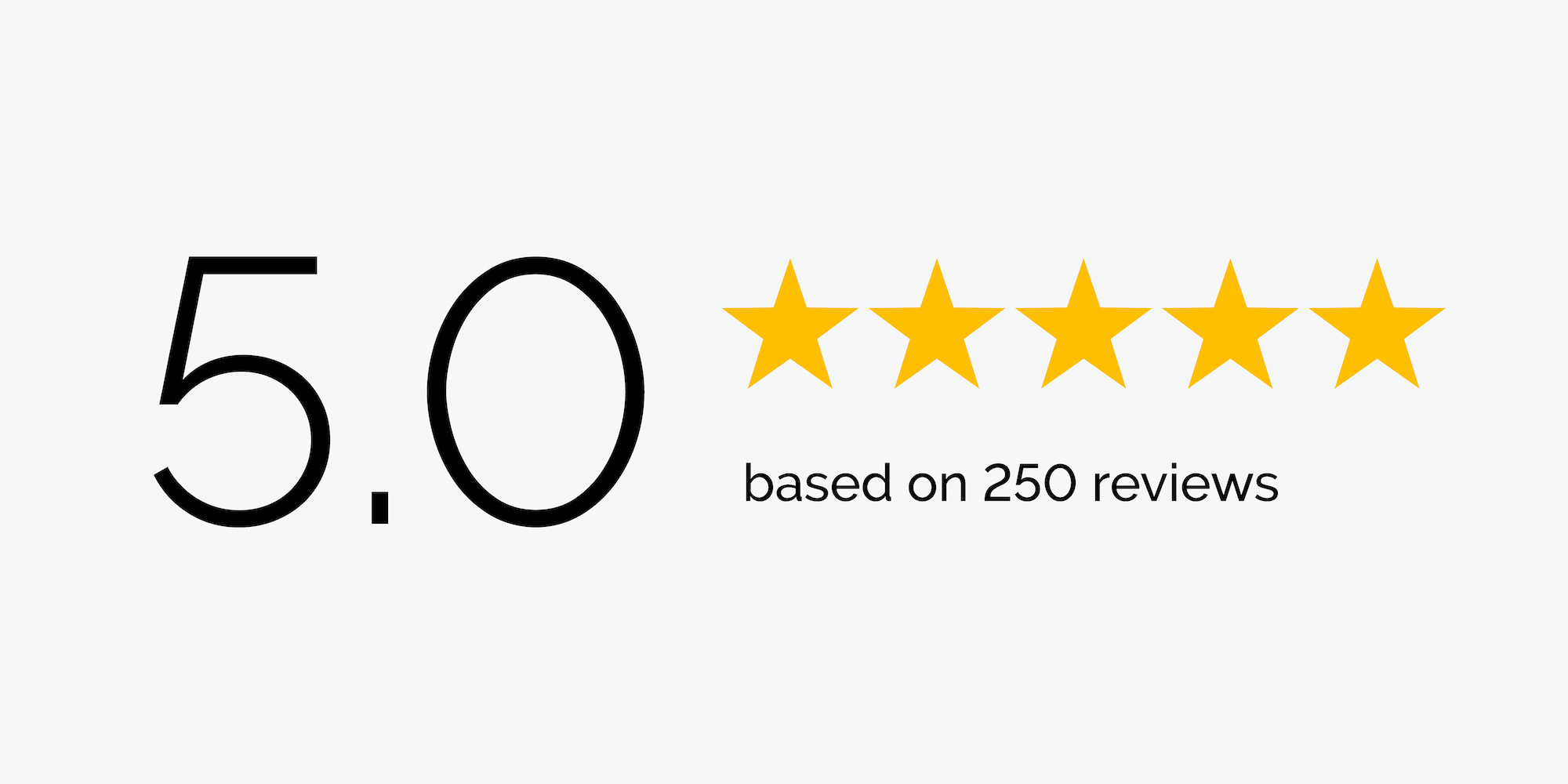You probably know how important reviews can be for your business, but the mechanics of actually getting reviews can get a bit complicated. Because it can get complicated, many businesses never actually get around to putting together a strategy for getting reviews on their products or services.
In this article, we’re going to look at a few points that should make your review collection process easier. Here’s what we’ll discuss:
- Why are reviews important?
- What should the process for getting reviews look like?
- What software is available for you to automate this process and collect new reviews automatically
Why are reviews important?
Reviews are very important because they contribute to the idea of “Social Proof”. In short, you’re giving prospects permission to buy from you because other people like them have bought from you and had a good experience. Having a bunch of good reviews can help someone feel more comfortable with your brand, having no reviews can be a red flag, and having BAD reviews can make people run away from your company!
Here’s what’s really unfortunate about reviews, if you’re not proactive about asking for reviews. The majority of people who have good – or even great – are probably not going to leave a review. The people that are most likely to leave a review are people who have bad experiences. They’re upset about something and leaving a bad review is a way for them to feel heard or validated.
What this can lead to is a company that provides really great service to most people most of the time having fairly bad reviews because the customers that were not satisfied leave reviews at a higher rate.
So it’s not enough to treat people well, to provide exceptional customer service to everyone that you can, and to deliver on what your service or product claims to do. You also must be proactively determining who your happiest customers are and asking them to leave reviews about your company.
What does a review process look like?
Collecting reviews should really be a 2 part process, an internal survey that you send out and then an invitation to leave a review on the review sites that are important to you (ex: a realtor may care about a Zillow review, while a restaurant may be more concerned about Yelp).
The first part of the review collection process, the internal survey, is used to determine a Net Promoter Score, or NPS. You’ll see us marketing geeks use the acronym NPS as a gauge for how well a business is pleasing it’s customers.
To create an NPS score for your business, you just ask your customers something like “On a scale of 1 to 10, how likely are you to recommend us to a friend or colleague?”. Then you average the answers and get your company’s baseline NPS score. If it’s lower than what you want, then you know there’s a customer service issue that you should address. If your internal NPS score is higher than your online review scores (for instance, a 9.2 NPS score but a 3.7/5 on Google), then you have an outreach problem.
When you start receiving results from your NPS survey, you should organize your customers based on the score that they give you. Most companies do something like this: 8-10 is good, 5-7 is neutral, and 4 and below is bad. And of course, you should treat each of these segments differently. Your 8-10s should be highly encouraged to leave a review on a review site of your choice, like Google, Facebook, or an industry specific review site. You should reach out to your neutral customers to see how you could have improved their experience, and you should move heaven and earth to make things right for the segment that had a bad experience.
You’ll learn quickly where the friction is in your business and begin to cut down on bad experiences. As they say, what gets measured gets improved. So you have to measure.
As a second part of this strategy, you should have a pretty good idea of how your customers shop based on the research you’ve already done when building out your persona. You have done that, haven’t you? If not, here’s a really easy guide [with templates!] to help you knock that out.
Right now, the big review players for most businesses are Google and Facebook, and then there are normally 1 or 2 other big review sites per industry.
So take a look at the review sites that your prospects are looking at before they buy to determine where you need to put your energy. Maybe Facebook has lots of reviews, but Google only has 1 – then let’s focus on Google. Maybe Google and Facebook both have a lot of reviews, but you’ve gotten more negative reviews on Facebook – then focus on Facebook.
So, now that you’ve got customers who have completed their NPS survey, it’s important to ask them to leave a review where you need it the most! This is obviously best handled through some sort of marketing automation platform, but if you’re just getting started and don’t have a high volume of customers, personally reach out to them and ask for a review.
Depending on the type of industry that you’re in, it may also be a smart idea to create some sort of affiliate structure, where your best customers can get rewarded when they refer other people to your business.
3. The Best Review Collection Software
HubSpot Service Hub
The word ‘Best’ is subjective and based on budget. One of my favorite software tools is HubSpot, and they’ve launched a Customer Service product in the couple of years that is quite good. If you already use HubSpot as your CRM and Marketing Automation tool, it may make a ton of sense to explore their Service Hub Software.
In addition to quick and easy NPS surveys, they have a really nice Knowledge Base tool, an advanced ticketing system with automation and routing, task automation, different ticket pipelines, 1:1 video creation tools, live chat, a conversations inbox that connects your forms, live chat, facebook messenger and customer service email address all in one place, conversational bots, email templates, meeting scheduling, productivity reports, customer experience surveys, lots and lots of custom reporting, and great dashboards. I’m a fan of HubSpot, I drink that Kool-aid, and I’m not ashamed.
HubSpot Service Pro starts at $400/month. Is it worth every penny? Yes it is. Schedule a demo here.
While HubSpot is a complete contact management tool (tracking people all the way from an unknown person on your website to a happy, thriving, referring customer), it’s overkill if all you’re looking for is NPS and review software.
Reviews.io
A company that I’ve recently partnered with that specializes in this is called Reviews.io. They’re a certified Google Review Partner (which is a fancy way of saying that they can help make your Google Ads campaigns pop), and they specialize in helping you collect reviews, distribute those reviews to different review sites, display those reviews on social media, and – this is very cool! – easily turn those reviews into digital ads.
When someone becomes a customer, you can send their info over to reviews.io and they handle all of the follow up work, leaving you time to work on your business.
Reviews.io starts at $89/month.
Schedule a demo of reviews.io.
Active Campaign
ActiveCampaign is a marketing automation software that is very affordable and, with a little bit of work, can be set up to handle review collection quite well. To me, their main selling point is their price – they offer some pretty advanced automation tools at a price that just can’t be beat. It’s not the most fun program to use, but it gets the job done.
In ActiveCampaign, you can create a workflow where when a prospect becomes a customer it sends them an email asking them to fill out a form. Then, based on how the user fills out the form, you can send a follow up email. It won’t be as slick as either of the other two options, but starting at $9/month, it’s easy on the wallet. You can get started with ActiveCampaign here.
If you have any questions about this or would like a personal recommendation for your business, please schedule a free consultation.





